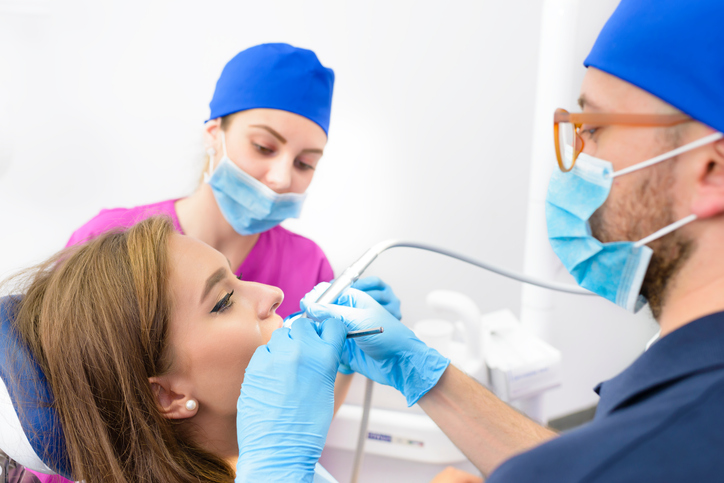The Origins of Dental Hygiene

The profession of dentistry has come a long way from the early days to how we provide McKinney dental care today.
For years, patients who dealt with tooth pain wouldn’t visit a dentist or even a doctor to cure what ailed them. Instead, they would head down to see the local barber who would pull out their tooth to ease any discomfort.
Fortunately, dentists today only pull teeth in extreme cases, and the entire health profession is built around keeping smiles healthy enough that patients can enjoy great looking teeth and gums for a lifetime.
Similarly to how dentistry has changed, the concept of dental hygiene has also evolved. In fact, the profession of dental hygienist is just over 100 years old.
The original goal of dental hygiene focused on awareness. Tooth decay, gum disease, and tooth loss were commonly accepted as a natural part of growing older. Initially, the driving force by dental hygiene and dental hygienists was to better educate the public about how brushing, flossing, and frequent trips to the dentist could help to avoid the painful and costly problems that led to tooth loss.
The History of Dental Hygiene
Considered the founder of dental hygiene, Dr. Alfred Fones provided one-year of training to the first dental hygienist, Irene Newman, before he allowed Irene to begin treating patients. Dr. Fones was dedicated to the idea of preventive medicine and the valuable role eating a proper diet could play in helping patients lower their risk for dental disease and decay.
Dr. Fones foresaw a future where dental hygienists would work collaboratively with other social and health workers to educate the public on the best preventative care practices.
“Dental hygiene…opens up pats of usefulness, activity, and inspiration hitherto undreamed of, allying her with the workers of the world who are helping humanity in masses,” wrote Dr. Fones.
Following Dr. Fones’ efforts, three areas are specifically linked to the growth and evolution of dental hygiene. The areas included:
- Science. As researchers gained a clearer understanding of the mechanisms behind a healthy mouth, the field of dental hygiene refined the best practices to teach the public.
- Education. With an idea of which practices to teach the public, the workforce of dental hygienists first needed to be trained and schooled in these practices to have the qualifications to pass them on to the public.
- Practice. Only through repeated practice and repetition would the general public start to take these recommendations seriously.
A Practice Based in Science
The foundational principles behind dental hygiene were formed by Dr. Fones through research he collected on children. Dr. Fones began providing dental hygiene tips, instruction, and care for children who first started attending local schools.
Dr. Fones research showed a 34 percent decline in the number of cavities in the teeth of fifth graders who had started receiving dental hygiene at the start of the first grade.
Dr. Fones collected the results of his research and published a paper in the Journal of the American Dental Hygienists’ Association in 1926.
Despite making initial breakthroughs in the field of dental hygiene during the 20s, it wasn’t until the 1960s that further advances in the field would be made.
G.I. Joe Made Dentistry Possible
One of the biggest contributing factors we have to thank for our understanding of dental care today is World War II. Without these brave men, McKinney dental care wouldn’t be as advanced as it is today.
While this may seem odd, tens of thousands of American men were required to undergo a comprehensive physical prior to their enrollment in the military, and upon discharge after the war. As a result, the army collected detailed information on the men’s oral health, including additional information on lifestyle factors, such as smoking habit, weight, and diet, that now play a role in our understanding of a patient’s risk for tooth decay and gum disease.
Working with this detailed database, researchers were able to develop a new understanding of dental hygiene that would then be taught in university during the 60s.
While history and taken a long and often winding path towards how we understand and provide dental care today, it’s all part of the process that created the standard for McKinney dental care our patients expect to receive.
